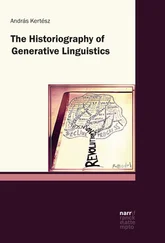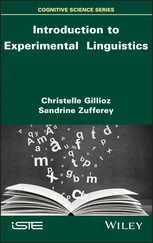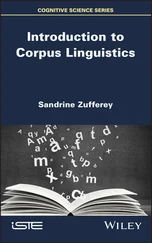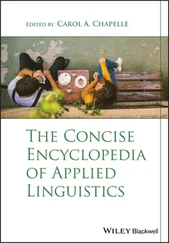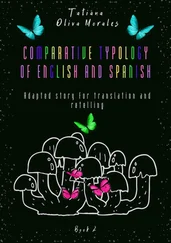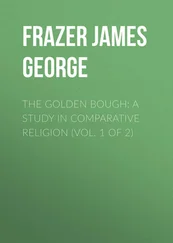Alexander Akulov - Manual of comparative linguistics
Здесь есть возможность читать онлайн «Alexander Akulov - Manual of comparative linguistics» — ознакомительный отрывок электронной книги совершенно бесплатно, а после прочтения отрывка купить полную версию. В некоторых случаях можно слушать аудио, скачать через торрент в формате fb2 и присутствует краткое содержание. ISBN: , Жанр: Языкознание, на русском языке. Описание произведения, (предисловие) а так же отзывы посетителей доступны на портале библиотеки ЛибКат.
- Название:Manual of comparative linguistics
- Автор:
- Жанр:
- Год:неизвестен
- ISBN:9785447441906
- Рейтинг книги:4 / 5. Голосов: 1
-
Избранное:Добавить в избранное
- Отзывы:
-
Ваша оценка:
- 80
- 1
- 2
- 3
- 4
- 5
Manual of comparative linguistics: краткое содержание, описание и аннотация
Предлагаем к чтению аннотацию, описание, краткое содержание или предисловие (зависит от того, что написал сам автор книги «Manual of comparative linguistics»). Если вы не нашли необходимую информацию о книге — напишите в комментариях, мы постараемся отыскать её.
Manual of comparative linguistics — читать онлайн ознакомительный отрывок
Ниже представлен текст книги, разбитый по страницам. Система сохранения места последней прочитанной страницы, позволяет с удобством читать онлайн бесплатно книгу «Manual of comparative linguistics», без необходимости каждый раз заново искать на чём Вы остановились. Поставьте закладку, и сможете в любой момент перейти на страницу, на которой закончили чтение.
Интервал:
Закладка:
Moreover, we should keep in mind the fact that there are thousands of languages which history is completely unknown and which are described only in their current phase and so there is no ability to distinguish borrowings in their lexicon and so it’s completely impossible to say anything about their genetic relationship basing on methodology of comparison of lexis.
Methodology that ignores structural/grammatical issues allows different scholars to make completely different conclusions about the same language, for instance: Sumerian is thought to be a relative of Kartvelian stock (Nicholas Marr), of Uralic stock (Simo Parpola), of Sino-Tibetan (Jan Braun), of Mon-Khmer (Igor M. Diakonoff) or even of Basque (Aleksi Sahala). Another notable example is Ainu that is attributed to Altaic (James Patrie), to Austronesian (Murayama Shichirō), to Mon-Khmer (Alexander Vovin) 6 6 Due to “completely isolated” position among languages of the world Ainu is especially attractive material for perfunctory and amateurish hypotheses.
. The most notable fact is that all such attempts coexist and all are considered by public as rather reliable in the same time, obviously it looks much a like a plot for a vaudeville sketch rather than a serious matter of a science.
Different methods can lead to different conclusions but if people use same methodology they supposedly are expected to make same conclusions about the same material, however, we don’t see it; it means only that methodology based on comparison of lexis isn’t relevant for comparative linguistics.
Also a weird issue is that such lexical methodology has never been tested in an appropriate way. Being asked “why you came to the conclusion that it is possible to conclude something about certain languages genetic relationship basing on comparison of lexis only?” megalocomparativists usually answer “morphology doesn’t matter” and don’t explain how they came to such conclusion; they actually look much alike adepts of a religion but not alike scientists since science always supposes experiments and verifications while statements “it is so because it is so” obviously don’t belong to the field of science but actually are statements of a religion.
All facts show us that comparison of lexicon is completely irrelevant methodology in the field of historical comparative studies of languages.
Why we can say that language is first of all grammar, i.e.: system of grammar meanings and their distributions but not a heap of lexemes?
Yet William Jones, founding father of linguistics, pointed on the fact that grammar is much more important than lexis:
The Sanscrit language, whatever be its antiquity, is of a wonderful structure; more perfect than the Greek, more copious than the Latin, and more exquisitely refined than either; yet bearing to both of them a stronger affinity, both in the roots of verbs, and in the forms of grammar, than could possibly have been produced by accident; so strong, indeed, that no philologer could examine them all three without believing them to have sprung from some common source, which perhaps no longer exists. There is a similar reason, though not quite so forcible, for supposing that both the Gothick and the Celtick, though blended with a very different idiom, had the same origin with the Sanscrit; and the old Persian might be added to the same family, if this were the place for discussing any question concerning the antiquities of Persia (Jones 1798: 422 – 423).
Main function of any language is to be mean of communication, but in order to be able to communicate we have to set a system of rubrics/labels/markers first of all, that’s why main function of any language is to rubricate/to structurize reality. Structural level/grammar is the mean that rubricates reality and so it is much more important than lexicon. I suppose we can even say that structure appeared before languages of modern type, i.e.: when ancestors of Homo sapiens developed possibility of free combination of two signals inside one “utterance” it already was primitive form of modern language. Structure is something alike bottle while lexicon is liquid/matter which is inside the bottle; in a bottle can be put wine, water, gasoline or even sand but the bottle always remains bottle.
To those who think that structure is not important I can give the following example taken from Japanese language: Gakusei ha essei wo gugutte purinto shita. “Having googled an essay student printed [it]”. What makes this phrase be a Japanese phrase? “Japanese” words gakusei “student” (a word of Chinese origin), essei “essay” (a word of English origin), purinto “print” or, may be, “Japanese” verb guguru “to google”? One can probably say that this example is very special since it was made without so called “basic lexicon”; however, such words are of everyday use and also, as it has been noted above, it is impossible to distinguish so called “basic lexicon” since all lexis is culturally determined and borrowings can be even inside of so called “basic lexis”. Any language can potentially accept thousands of foreign words and still remains the same language until its structure remains the same.
All the above considered facts mean that comparison of lexis should not be base of genetic classification of languages and any researches about genetic affiliation should be based on comparative analysis of structures/grammar, i.e.: analysis and comparison of grammatical systems of compared languages is completely obligatory procedure to prove/test some hypothesis of genetic affiliation of a language. That’s why in current monograph two powerful typological tools are represented.
2. Prefixation Ability Index (PAI) allows us to see whether two languages can potentially be genetically related
2.1. PAI Method
2.1.1. PAI method background
A. P. Volodin pointed on the fact that all languages can be subdivided into two sets by the parameter of presence/absence of prefixation: one group has prefixation and the other has not (Volodin 1997: 9).
The first set was conventionally named set of “American type” linear model of word form 7 7 This type of linear model of word form is named “American type” since it has been described mainly on the material of Native American languages (especially of North America)
.
According to Volodin American type linear model of word form is the following:
(p) + (r) + R + (s).
The second one was conventionally named set of “Altaiс type” linear model of word form 8 8 This type of linear model of word form is named “Altaiс type” since this linear model has been described mainly on the material of languages of so called Altaic stock.
.
According to Volodin it is the following:
(r) + R + (s)
(p – prefix, s – suffix, R – main root, r – incorporated root; brackets mean that corresponding element can be absent or can be represented several times inside a particular form).
Volodin supposed that there was a border between two sets and that languages belonging to the same set demonstrate certain structural similarities. Also he supposed that typological similarities could probably tell us something about possible routes of ethnic migrations.
2.1.2. PAI hypothesis development
Having got Volodin’s notion about two types of linear model of word form, I for quite a long time thought that there was a pretty strict water parting between languages that have prefixation and those that have not. For instance, I seriously thought that Japanese had no prefixes and tried to consider all prefixes of Japanese as variations of certain roots, i.e. as components of compounds; until one day I finally realized that so called “variations of roots” actually could never be placed in nuclear position and so they all should be considered as true prefixes, so strict dichotomy was broken and I had to elaborate new theory.
Читать дальшеИнтервал:
Закладка:
Похожие книги на «Manual of comparative linguistics»
Представляем Вашему вниманию похожие книги на «Manual of comparative linguistics» списком для выбора. Мы отобрали схожую по названию и смыслу литературу в надежде предоставить читателям больше вариантов отыскать новые, интересные, ещё непрочитанные произведения.
Обсуждение, отзывы о книге «Manual of comparative linguistics» и просто собственные мнения читателей. Оставьте ваши комментарии, напишите, что Вы думаете о произведении, его смысле или главных героях. Укажите что конкретно понравилось, а что нет, и почему Вы так считаете.
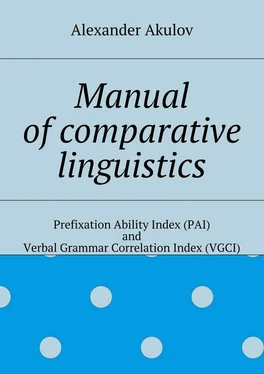
![Andrew Radford - Linguistics An Introduction [Second Edition]](/books/397851/andrew-radford-linguistics-an-introduction-second-thumb.webp)

